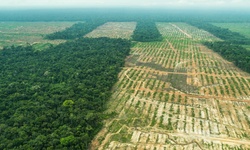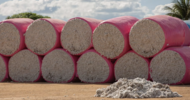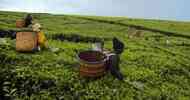Head of London-listed company linked to illegal clearing of Peru rainforest
The CEO of a company listed on the London Stock Exchange, that aims to become the world’s largest producer of cocoa, is responsible for illegally clearing swathes of rainforest in the Peruvian Amazon, according to a report by the Environmental Investigation Agency (EIA).
The website for the Cayman Islands-based company, United Cacao, implies the company could be a force for positive change in the chocolate business, mostly produced in West Africa, stating that it “seeks to provide a clear path forward for ethically-produced cacao to the world marketplace”.
But the EIA investigation alleges the company’s founder and CEO, Dennis Melka, has illegally deforested about 7,000 hectares (17,300 acres) of mostly primary rainforest. It says he is looking to expand his agricultural plantations by acquiring 450 units of rural private property in the Amazon, in addition to requesting at least 96,192 additional hectares of public land from the Peruvian government.
Melka, who made a fortune in the palm oil business in Malaysia, is now listed as the main actor in a network of 25 companies that have been set up in Peru, according to the EIA investigation. Only one registers Melka as an owner but he is listed as the only person with power of attorney for the remaining 24 companies with the Peruvian property registry, Superintendencia Nacional de Registros Públicos (Sunarp).
The forest allegedly cleared by two of Melka’s Peruvian companies adds up to almost 7,000 hectares (ha): 4,870.40 ha in the Nueva Requena project, developed by Plantaciones de Ucayali SAC, in Peru’s eastern Ucayali region, and 2,093.94 ha in Tamshiyacu, developed by Cacao del Perú Norte SAC, in the Loreto region, according to the EIA’s estimates.
The EIA report, Deforestation by Definition, estimates the timber felled in clearing this land would fill 125 Olympic swimming pools. According to the Peruvian minister of agriculture and irrigation, Juan Manuel Benites, neither of the companies had legal authorisation to deforest these areas.
In August 2014, the Ministry of Environment initiated legal proceedings to suspend the Melka Group’s operations in Tamshiyacu and Nueva Requena. While investigations have been opened, no action has yet been able to halt the companies’ operations, the report said.
The Guardian attempted to contact Melka through the London-based Tavistock PR company listed on his website but emails and calls were not returned.
Melka, a Czech citizen and resident of the Cayman Islands, implied that his company had not deforested in Peru in an audio interview with Directors Talk Interviews.
“By the time the plantation companies actually get to the land, that land has been logged and clearcut of all tropical hardwoods. It’s simply not rainforest…” he said.
He went on to accuse “radical NGOs” of having a “neo-colonialist attitude” adding that Peru had 70m ha of rainforest and should not be “importing food to meet the needs of its population”.
However, the EIA argues satellite imagery analysis shows that the areas deforested by the Melka Projects were mostly primary forest before the project’s intervention.
It is an argument supported by Greg Asner of the Carnegie Institute for Science who led research which used three-dimensional forest mapping data with satellite imaging data to create a map of carbon density in Peru.
The carbon stock values in Tamshiyacu prior to the “deforestation event under investigation” averaged 122 metric tons of carbon per hectare, he told the Guardian.
“Such high carbon levels are found only in primary tropical forest in this part of the Amazon basin, so the deforestation event must have removed the kind of tall, intact tropical forest canopy that we normally picture when we think of Amazonia.”
“Illegal cultivation of agricultural plantations poses perhaps the greatest new threat to the forests of Peru, as the Peruvian government currently lacks the effective power to enforce laws and regulations, even when illegalities are clearly documented and reported,” said Julia Urrunaga, one of the report’s authors and EIA’s Peru director.
A legal loophole means authorities can rely on a technical classification of the land that ignores the presence of standing trees in evaluating requests for land use change. Around 20m ha of Peru’s 74m ha of Amazon rainforest have not been classified as forest, leaving it open to being labelled as agricultural land.
The report also draws attention to a national player. Grupo Romero, the largest economic actor in the country, already has 22,500 ha of palm oil plantations in operation and has requested the allocation of more than 34,000 additional hectares of public land for palm oil, it says.
At the UN Climate Change summit last September, Peru signed a $300m (£191m) deal with Norway to reduce net deforestation to zero by 2021. Yet, according to the report, the Peruvian government is promoting the expansion of palm oil, claiming its cultivation will not threaten forests.














